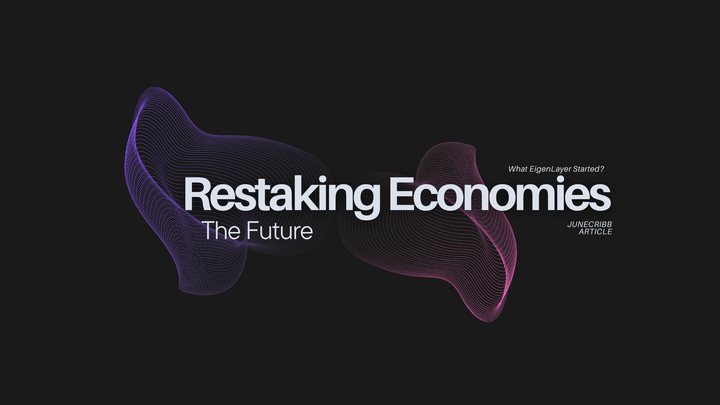Perpetual DEXs & On-Chain Derivatives: Revolutionizing Leverage Trading and Market Making

Introduction
The emergence of decentralised finance (DeFi) has profoundly transformed the way individuals access financial services. Among the varied innovations DeFi has brought, perpetual decentralized exchanges (Perpetual DEXs) and on-chain derivatives trading have stood out as pivotal breakthroughs. Unlike traditional finance exchanges, these platforms offer trustless, permissionless access to advanced leveraged trading and derivative instruments all on the blockchain.
This comprehensive article explores how platforms like GMX, Hyperliquid, Vertex, and dYdX are reshaping leverage trading and market making onchain. We will dive deep into the technical underpinnings and market implications of their innovative approaches, and understand why these projects are spearheading a new era of permissionless, transparent, and efficient derivatives trading.
1. Background: Leverage Trading and Market Making in Finance
Before delving into perpetual DEXs and their features, it’s essential to understand two fundamental financial concepts that underpin these platforms: leverage trading and market making.
1.1 Leverage Trading
Leverage trading involves borrowing funds to increase exposure to an asset, allowing traders to amplify potential profits (and losses). For example, a 10x leverage means a $1,000 deposit controls $10,000 worth of assets. This mechanism is prevalent in derivatives markets, particularly futures and options.
While leverage can magnify gains, it comes with higher risk—margin calls or liquidation occur if the market moves against the trader. Traditionally, leverage trading was the domain of centralized exchanges or institutional platforms.
1.2 Market Making
Market making refers to continuously providing bid and ask quotes on an asset, ensuring liquidity and tighter spreads. Market makers profit off the difference between buy and sell prices but risk exposure to price movements. Automated market makers (AMMs) like Uniswap introduced a new paradigm of decentralizing liquidity provision, but derivatives markets have unique challenges in risk management.
2. What are Perpetual Derivatives?
2.1 Perpetual derivatives
Perpetual contracts use a funding rate mechanism to keep the contract price tethered to the underlying spot price. Depending on market conditions, long or short position holders pay periodic fees to counterparties, incentivizing alignment with spot prices.
This mechanism removes the need for contract rollovers or settlement, easing leveraged trading for market participants.
2.2 Perpetual DEXs: An Overview
Early decentralized exchanges focused largely on spot markets and used AMMs for liquidity provision. However, derivatives and perpetual swaps require more complex mechanisms such as margin management, liquidations, and real-time price discovery not easy to replicate on-chain due to scalability and performance constraints.
Recent technological advancements and Layer 2 solutions have enabled fully on-chain perpetual DEXs. These platforms provide:
- Decentralized custody of collateral and positions.
- Trustless, automated management of leverage and margin.
- Efficient market making via innovative AMMs or on-chain order books.
- Lower counterparty risk compared to centralized exchanges.
Platform architectures differ widely, ranging from off-chain order books with on-chain settlement (e.g., dYdX) to fully on-chain AMM-based perpetuals (e.g., GMX), and innovative hybrid or Layer 1 chains built explicitly for perpetual trading (e.g., Hyperliquid).
3. Key Platforms: GMX, Hyperliquid, Vertex, and dYdX
3.1 GMX — Decentralized Perpetuals on Arbitrum and Avalanche
GMX is a decentralized spot and perpetual exchange that leverages the Arbitrum and Avalanche blockchains to deliver low fees and near-instant trade execution. GMX provides an innovative liquidity model by combining a multi-asset LP pool with an automated market maker designed specifically for perpetual swaps.
Key Features:
- Multi-Asset Liquidity Pool: Instead of traditional order books, GMX pools liquidity from users who deposit assets like ETH, BTC, and stablecoins, which enables traders to open leveraged long or short positions.
- Leverage: Offers up to 30x leverage allowing traders significant exposure with relatively low capital.
- Fee Model: Uses a dynamic fee model with rebate incentives to align liquidity providers and traders interests.
- Decentralization: No centralized order matching; all operations occur via smart contracts.
GMX’s architecture prioritizes capital efficiency and user simplicity, opening perpetual derivatives trading to a wider crypto audience without the need for complex custody or margin systems.
3.2 Hyperliquid — Lightning-Fast Layer-1 DEX for Perpetual Futures
Hyperliquid is an exciting Layer-1 blockchain built primarily for trading perpetual futures. Claiming the title of the fastest decentralized perpetual futures exchange, Hyperliquid combines on-chain order books, ultra-low latency, and high throughput.
Key Innovations:
- Native Order Book: Instead of traditional AMMs, Hyperliquid uses a fully on-chain limit order book allowing for deep liquidity, granular price discovery, and sophisticated order types.
- High Performance Blockchain: Custom-built chain optimized for sub-second finality and high transaction throughput to support active futures trading.
- Decentralization and Security: Trustless custody of user funds and open protocol governance.
- Zero Gas Fees for Users: UX friendly with fee abstraction mechanisms.
Hyperliquid has rapidly grown in volume and market share, capturing the attention of traders who seek a high-speed and fully transparent perpetual futures platform onchain.
3.3 Vertex — Concentrated Liquidity Perpetuals on Solana
Vertex is a unique on-chain decentralized derivatives exchange built on Solana. It innovates by introducing concentrated liquidity pools that improve capital efficiency while supporting leveraged trading with perpetual contracts.
Notable Aspects:
- Concentrated Liquidity Pools: Inspired by concepts popularized by Uniswap v3, Vertex allows liquidity providers to deploy capital within custom price ranges, reducing capital waste compared to traditional AMMs.
- On-Chain Risk Management: Sophisticated margin and liquidation mechanisms running fully trustlessly on Solana’s high-speed blockchain.
- Leveraged Trading: Traders can take long or short positions, with leverage up to 10x.
- Interoperability: Plans for cross-chain liquidity and composability with other Solana DeFi protocols.
Vertex aims to balance the speed and low fees of Solana with modern AMM design to deliver next-generation perpetual derivatives trading for decentralized markets.
3.4 dYdX — The Pioneer of Layer 2 Perpetual Trading
dYdX is one of the earliest decentralized perpetual futures exchanges, famously pioneering off-chain order books with on-chain settlement. Built initially on Ethereum Layer 2 (StarkWare’s zk-rollups), dYdX offers professional-grade trading features including advanced charting, margin modes, and a wide asset set.
Highlights:
- Hybrid Order Book Model: dYdX matches orders off-chain for speed but records the final state and collateral on-chain for security and transparency.
- Deep Liquidity and Advanced Features: High liquidity pools with complex order types such as stop losses, take profits, and trailing stops.
- StarkWare Scaling: Leverages ZK-rollup technology for near-instant finality and low gas fees.
- Cosmos Chain Migration: dYdX is transitioning to its own independent Cosmos SDK blockchain, aiming to enhance throughput and decentralization over time.
dYdX’s combination of usability, efficiency, and decentralization sets a high bar for perpetual DEXs and has attracted a significant user base of professional crypto traders.
4. Technical Innovations Driving On-Chain Leverage Trading
The rise of perpetual DEXs and on-chain derivatives has been made possible by a variety of technical innovations, particularly focused on overcoming the challenges of blockchain scalability, trustlessness, and real-time price discovery.
4.1 Layer 2 Scaling and Dedicated Layer 1s
Performance and cost issues on Ethereum mainnet drove early perpetual DEXs like dYdX toward Layer 2 solutions such as zk-rollups, which batch transactions off-chain but keep settlement and security on-chain. Other projects, like Hyperliquid, have built their own dedicated Layer 1 optimized for fast order processing.
4.2 Liquidity Models: AMM vs Order Book
- AMM-Based Perpetuals: GMX and Vertex utilize automated market makers tailored for derivatives. These models pool liquidity, enabling perpetual swaps without centralized order matching. Recent advances such as concentrated liquidity improve capital efficiency.
- Order Book Models: Hyperliquid and dYdX deploy on-chain or hybrid order book systems. On-chain order books allow granular control and sophisticated order types but demand higher blockchain throughput. Hybrid off-chain order books offset this by reducing onchain load.
4.3 Margin and Liquidation Mechanisms
Decentralization demands transparent, trustless margin calculations and liquidation processes. Most platforms implement smart contracts that automatically calculate maintenance margins, initiate liquidations, and reward liquidators all encoded with immutable rules to ensure fairness.
4.4 Funding Rate Algorithms
To keep perpetual prices tethered to spot markets, funding rate mechanisms are critical. These rates incentivize traders to open or close positions based on market imbalance, helping reduce divergence between perpetual and spot prices.
5. Impact on DeFi and the Broader Trading Ecosystem
The proliferation of perpetual DEXs and on-chain derivatives is having a profound impact on decentralized finance and capital markets as a whole.
1. Democratization of Leverage Trading
Perpetual DEXs break down barriers to leveraged trading by reducing the need for centralized counterparties, KYC hurdles, and custody risks. Anyone with a crypto wallet can participate in derivatives markets, opening new avenues for traders globally.
2. Liquid Markets and Price Discovery
By decentralizing market making and liquidity provision, these platforms contribute to more transparent and fair price discovery for crypto assets. Combined with oracles and on-chain data feeds, perpetual DEXs offer resilient trading venues.
3. Protocol Composability
On-chain perpetuals are programmable financial primitives that can be composably integrated with other DeFi services including lending, options, tokenized assets, and yield farming. This composability enables novel financial products and strategies.
6. Challenges and the Road Ahead
While perpetual DEXs bring tremendous promise, significant challenges remain before they can fully supplant centralized derivatives exchanges.
- Security Risks: Smart contract vulnerabilities and oracle manipulation attacks are constant threats that require rigorous audits and innovation in security primitives.
- Scalability: Despite Layer 2s and new chains, high-frequency leveraged trading demands ultra-low latency and huge throughput, sometimes straining blockchain infrastructure.
- Regulatory Uncertainty: The regulatory landscape around derivatives is complex and evolving, potentially introducing compliance burdens that affect platform design and access.
- User Experience: Traders accustomed to centralized platforms require seamless UI/UX experiences, marginal complexity, and competitive costs to switch.
On the positive side, ongoing advancements like zk-rollups, decentralized oracles, cross-chain interoperability, and Layer-1 innovations bode well for the future maturation of perpetual DEXs.
Conclusion
Perpetual decentralized exchanges and on-chain derivatives protocols represent a monumental leap forward in how leverage trading and market making can be conducted in a trustless, transparent, and global manner. Platforms such as GMX, Hyperliquid, Vertex, and dYdX each bring unique innovations to the table from Layer-1 high-speed chains with on-chain order books to AMM-powered liquidity pools and advanced Layer 2 hybrid models.
For traders, these innovations reduce counterparty risk and democratize access to derivatives previously dominated by centralized players. For DeFi enthusiasts and developers, perpetual DEXs provide powerful composable building blocks capable of catalyzing new financial instruments and protocols.
Although challenges remain, the trajectory of perpetual DEXs and on-chain derivatives points toward a decentralized financial future where leveraged trading and market making operate efficiently, securely, and inclusively on the blockchain.
Whether you are a trader, developer, or investor, understanding these platforms and their technology is vital to navigating and capitalizing on the next generation of DeFi innovation.
Additional Resources
For more detailed information, analysis, and updates, explore the following links:
- The Rise of Perpetual DEXs: Hyperliquid & Bluefin's Growth (CoinShares)
- Understanding Hyperliquid - by Dartmouth Blockchain (Medium)
- The Transformation of Derivatives Trading Platform Ownership (Followin)
- Hyperliquid, Extended Exchange, Lighter, and Ostium (DeFi Prime)
- GMX V2 and Its Competitors: The New Wave Disrupting Decentralized Derivatives (LinkedIn)
- Decentralized Perpetual Exchanges Investment Thesis — Shaunda (Mirror.xyz)
- dYdX Official Website
- GMX Official Website
- Hyperliquid Official Website
- Vertex Official Website


Comments ()